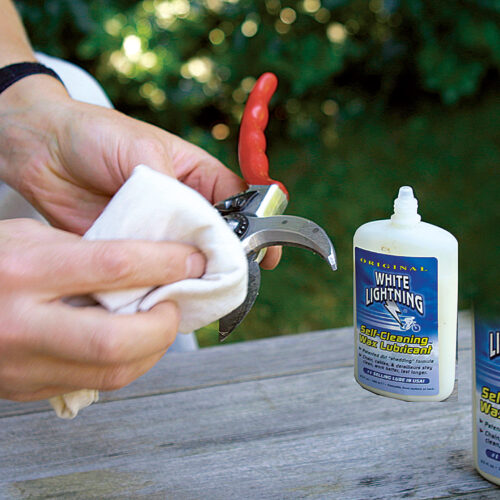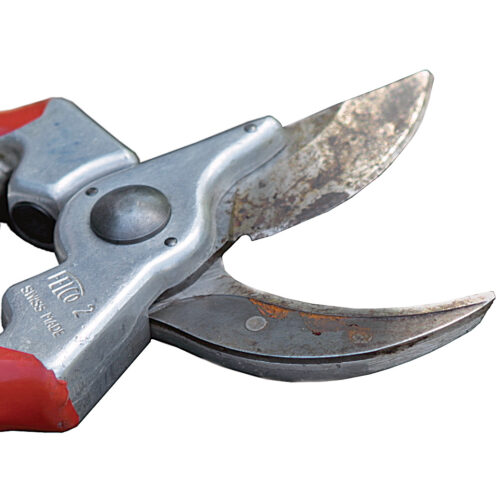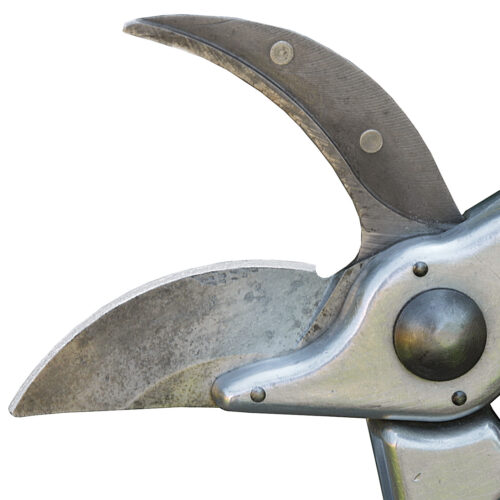The Comprehensive Way to Sharpen Pruners
Ten minutes spent with a diamond file, and your blades will cut like new

As a certified arborist and self-proclaimed tree nerd, I always keep my pruning tools in good working order, and with hand pruners, this means keeping them sharp. A sharp pair of hand pruners makes cleaner cuts that heal more efficiently, resulting in a healthier plant that’s better able to fight disease, insect infestation, and natural stresses with strength and vigor.
I find the best way to sharpen pruners is with diamond files. I prefer them to whetstones because they are easy to use, even for a novice. You’ll need three levels of coarseness (known as grits): coarse, fine, and extrafine. The files are inexpensive and will last longer than your pruners.
Well-used but well-maintained pruners should only need sharpening every six weeks. For gardeners who spend barely four hours a week pruning, one good sharpening a year may be adequate.
It takes only about 10 minutes to sharpen hand pruners in relatively good condition. The more regularly you maintain your pruners, the faster the sharpening chore goes. And keep in mind that learning how to sharpen hand pruners is not rocket science. It just takes a little patience and practice.
Supplies
- Kitchen scouring pads
- Soap and warm water
- Clean rag and towel
- Gloves
- #3 (semicoarse) steel wool
- #0 (fine) steel wool
- Diamond files (coarse, fine, and extrafine)
- Dry or silicone-based lubricant (such as White Lightning)
- Twigs for testing your progress
1. Start with a good cleaning

If the cutting surface is grimy, it will pass roughly over the hook and not cut cleanly, even if the blade is sharp.
Clean
With a scouring pad and a little warm, soapy water, scrub off all the sap, dried plant bits, and other gunk, and wipe the blades dry.
Remove rust
Use the coarse steel wool to remove rust and any tough matter that remains. Then move on to the finer steel wool to restore the sheen of the metal.
2. Get the angle and motion right
Begin with the coarsest file, and progress to the finest for the best edge. Before you use any of the files, pat them with a moist cloth. The water will keep the file from clogging with the tiny bits of metal you’ll be removing from the blade.
Start with the coarse file, holding it at the same angle as the beveled cutting edge (usually between 10 degrees and 20 degrees) (photo A). Starting at the inside of the blade and using moderate pressure, draw the file toward the tip in a curved motion that follows the shape of the blade (photo B).

This motion is easy, safe, and sharpens the entire blade evenly. For well-maintained pruners, 10 to 20 draws with the diamond sharpener is usually sufficient, but poorly maintained pruners may need about 40 to 50 passes.
Switch to finer grits to further sharpen the beveled edge. Use the fine file first, followed by the extrafine, using the same number of passes with each as you used with the coarse file.
Finish by removing burrs by running the extrafine file over the back side of the blade a few times (photo C).

3. Finish with lubricant
After I’m satisfied with the sharpness of my blade, I apply a dry or silicone-based lubricant to repel water and to hinder rust and oxidation. Once a year, I apply a product made for lubricating bicycle chains. Intermittently throughout the year, I will lightly coat the blades with olive oil, which keeps dirt and other materials from harming the pruners without drying or becoming sticky—and it’s a natural product.
Choose the right pruner for the job
Find the right tool for trimming your trees and shrubs. Watch the video: A Survey of Pruning Tools.
Fine Gardening Recommended Products

A.M. Leonard Deluxe Soil Knife & Leather Sheath Combo

Gardener's Log Book from NYBG

Sun Joe Cordless Telescoping Pole Chain Saw









Comments
I have apdids. What can I do?
Use dish soap and water on them I use a spray bottle or 1gl sprayer... Also make sure you get the under leaves... DO NOT RINCE!!! They don't like the taste of the soap and will go away. Good for all infested plants.
The pruners shown are Felco. I bought mine in Switzerland almost 20 years ago where they're manufactured. They are high quality and used by professionals. These pruners can be easily disassembled for cleaning and sharpening. That seems to me to be an easier and more thorough way of maintaining the pruner. I clean the back flat side of the blade by rubbing the blade on a sheet of fine sandpaper which is on a flat surface. That cleans off the sap and any rust on the entire blade. Doing it this way cleans the entire surface. The author's method is not only difficult but also doesn't clean the entire surface. The bevel is easier to sharpen when not in the pruner.
After putting it all back together, tighten the main nut until the blade slightly binds and then loosen just slightly. My way of checking for sharpness is to cut a piece of paper from the edge. If it's sharp, it will make a clean cut the entire length of the blade like with a razor blade.
I agree with Neil. I have Felcos and they are easier to sharpen if you take them apart. The article doesn't emphasize that you should sharpen ONLY the outer face of the cutting blade. You will ruin the pruners if you try to sharpen both faces of the cutting blade.
Real great Post!
I used a diamond files, they are extremely solid as well as durable as well as offer your pruners are neat
and also sharp side,
You would certainly have to begin with the rugged data.
This will offer your pruners a sharp harsh edge that is practically usable yet absolutely not ideal. The
cutting side would certainly be sturdy as well as the cutting surface would certainly be rough. Then get your fine file, this works
to provide the cutting side and also surface a much sharper and refined appearance. The additional great file makes the file
actually sharp; this would make your job a lot cleaner, faster and much more reliable.
I have to admit, I was a skeptic. I read the "how-to" post at https://www.finegardening.com and I came away doubting the effectiveness but I figured "what the heck", give it a try. I was going to have to spend the same amount getting my pruners sharpened once anyways, so why not... right?
So, I used this method and after a few swipes, the pruners were dangerously sharp again. I'm no longer a skeptic.
Also, i use a Felco pruners as author.
All Felco products are SWISS (Switzerland) made. The absolute best handcrafted pruners on the market, hands down... I am a professional gardener, and no pruners have come close to how satisfying these feel. They're perfectly balanced, feel unbreakable, and cut perfectly every time. They will last for years. And, thanks this topic https://allneedoff.com/best-pruning-shears/ i have choosed my perfect pair of Felco pruners.
In addition, one little tip - If they start to get any rust spots on them, a little oil, steel wool, elbow grease and 5-10 min of your time and they'll be back to looking new!!!!
Log in or create an account to post a comment.
Sign up Log in